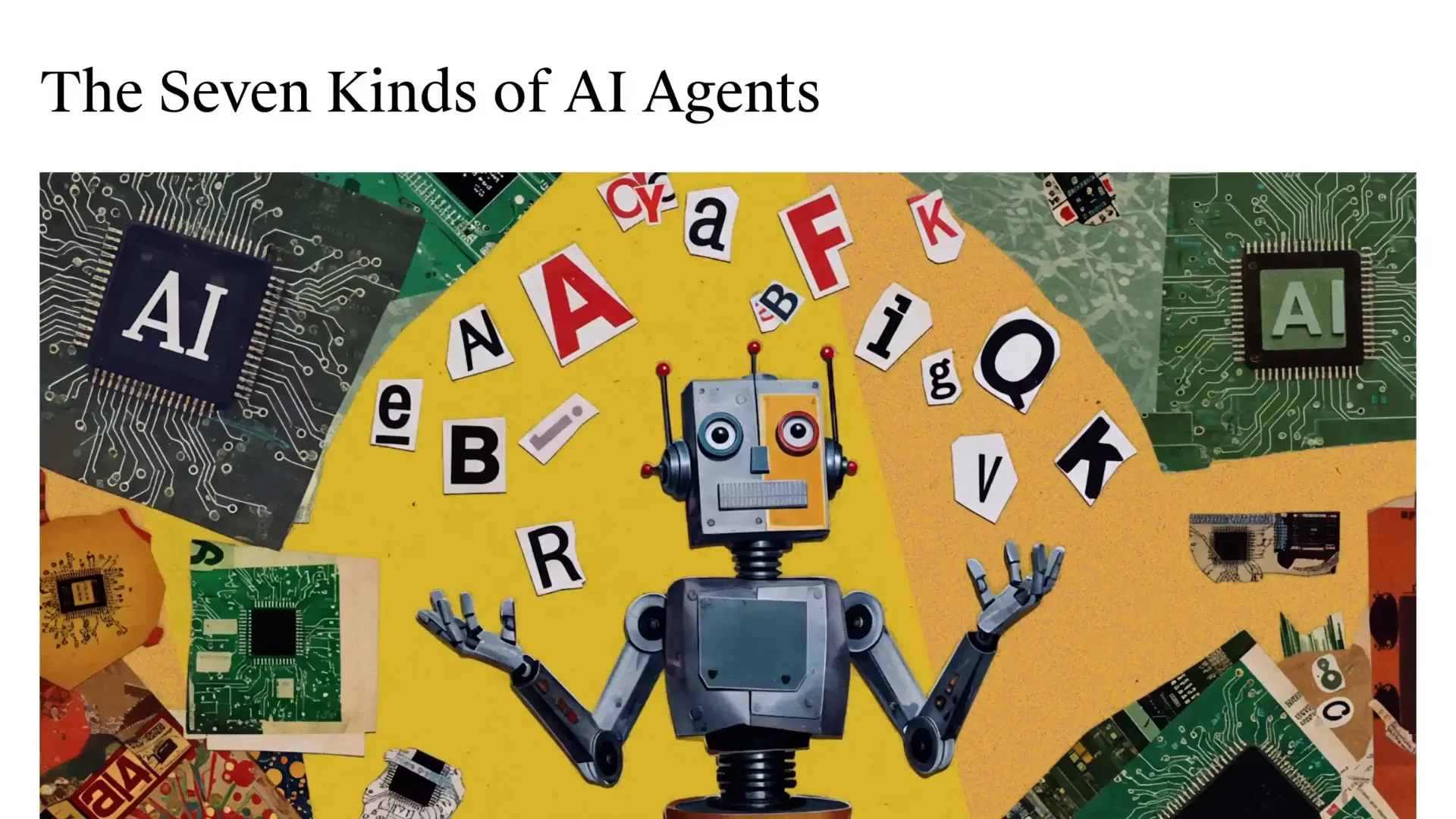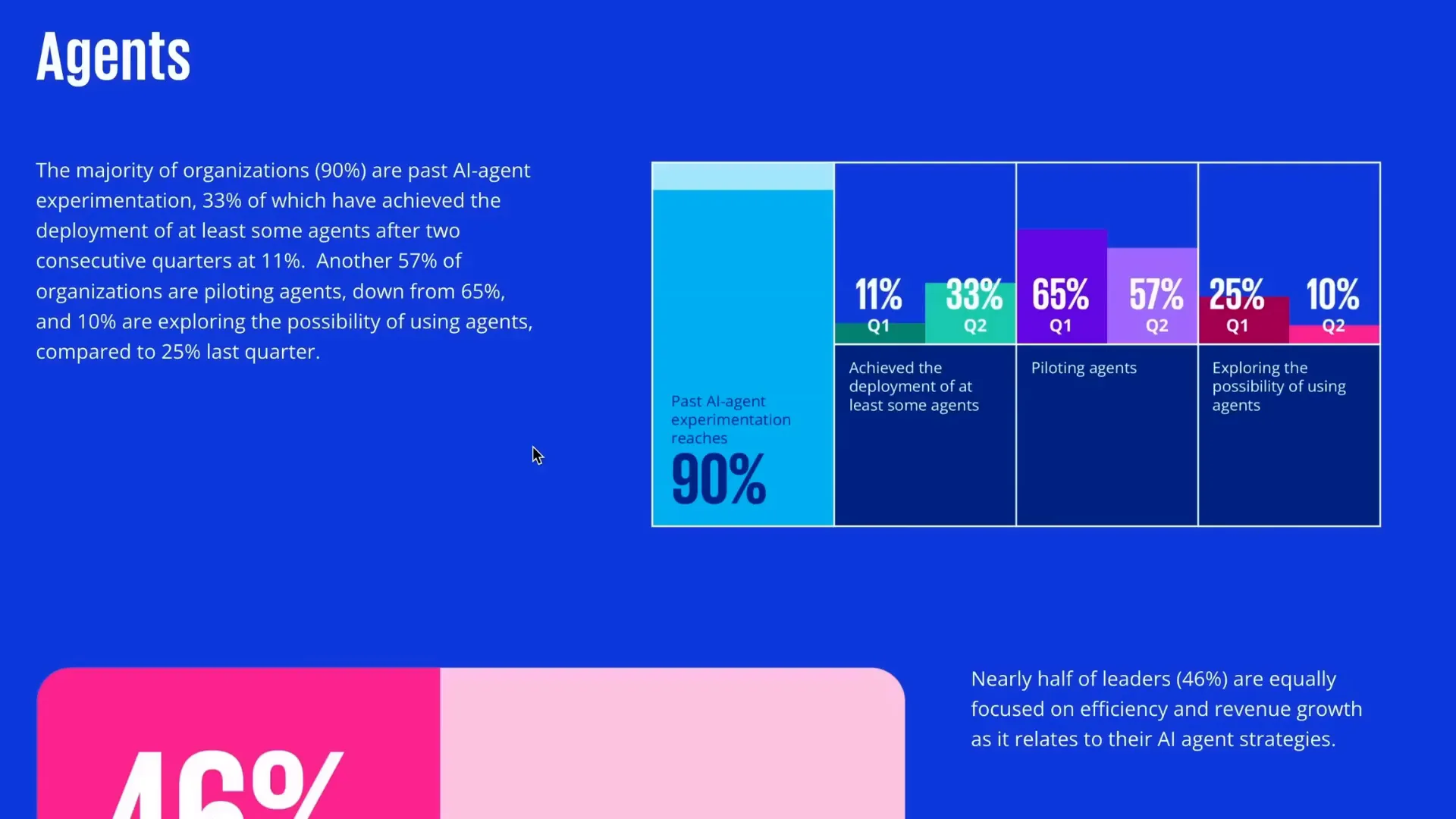Jul 10, 2025
The 7 Types of AI Agents: A Guide to Understanding AI in Recruiting and Beyond

Artificial intelligence is rapidly reshaping the way businesses operate, and one of the most transformative trends in this space is the rise of AI agents. These intelligent systems are not just tools to boost productivity—they have the potential to fundamentally change the scope and scale of work organizations can accomplish. Whether you're involved in AI in recruiting or managing complex workflows in other industries, understanding the different types of AI agents is essential for developing an effective agent strategy.
In this comprehensive guide, inspired by insights from The AI Daily Brief, we explore the seven types of AI agents, breaking them down by both functionality and business focus. We'll also examine how enterprises are adopting these agents today and what infrastructure is needed to unlock their full potential. Whether you're a business leader, HR professional, or AI enthusiast, this article will equip you with the knowledge to navigate the agentic era confidently.
What Are AI Agents? Understanding the Basics
The term “AI agents” can sometimes feel abstract, but at its core, an AI agent is an AI-powered system designed to perform tasks autonomously or semi-autonomously. Unlike traditional AI assistants or copilots that help users do tasks, agents often take the initiative to do things for users, reducing the need for constant human input.
Think of it this way: If an assistant AI helps you write an email by suggesting text, an agent AI might automatically send follow-up messages based on your calendar and email history. This subtle but powerful difference is at the heart of the "agentification" phenomenon sweeping through industries.
According to recent data from a KPMG pulse survey, this shift is no longer futuristic—it’s happening now. Between Q1 and Q2 of this year, the percentage of organizations with fully deployed AI agents tripled from 11% to 33%, while pilot programs jumped from 37% to 65%. Overall, 90% of surveyed companies have moved beyond experimentation and are actively piloting or deploying AI agents. This wave underscores the urgency for businesses to understand and strategize around these technologies.

Functional Classification of AI Agents: How They Operate
One way to categorize AI agents is by their functionality—essentially, how they operate and make decisions. This classification helps us understand the technical complexity and capabilities of different agents. Here are the seven functional types commonly recognized:
1. Simple Reflex Agents
Simple reflex agents operate on predefined rules triggered by immediate input data. They follow straightforward event-condition-action sequences without considering past states or complex reasoning.
For example, a password reset agent that detects specific keywords in a user’s request and automatically initiates a reset process fits this category. Other use cases include automated sprinkler systems triggered by smoke or email autoresponders that reply based on sender addresses or keywords.
2. Model-Based Reflex Agents
These agents build on simple reflex agents by maintaining a model of the environment. This allows them to infer aspects of the current state that aren't directly observable and make better-informed decisions.
For instance, in network monitoring, a model-based reflex agent uses logs, events, and metadata to understand network conditions, detect anomalies, and route alerts for root cause analysis.
3. Goal-Based Agents
Goal-based agents plan sequences of actions to achieve specific objectives. They include components like a goal state, planning mechanisms, state evaluation, and action selection.
An inventory management system that plans reorder schedules to maintain target stock levels exemplifies this type. These agents go beyond reactive behavior by considering future outcomes.
4. Learning Agents
Learning agents improve their performance over time by learning from experience rather than relying solely on preprogrammed knowledge. This capability makes them adaptive and better suited for complex, evolving environments.
A sophisticated customer service chatbot that refines its responses based on ongoing conversations with customers is a prime example.
5. Utility-Based Agents
Utility-based agents evaluate trade-offs among competing goals, optimizing for the best overall outcome rather than achieving a single goal state.
Imagine an AI agent searching for flight tickets that balances travel time against price without knowing beforehand which factor the user values more. This flexibility allows utility agents to handle nuanced decision-making.
6. Hierarchical Agents
Hierarchical agents break down complex tasks into smaller subtasks, delegating these to specialized lower-level agents. Each agent operates independently but reports progress to a supervising agent that coordinates the overall goal.
This structure enables managing sophisticated projects by distributing workload efficiently across multiple agents.
7. Multi-Agent Systems
Multi-agent systems combine various agents working collaboratively to achieve complex objectives. This approach leverages the strengths of individual agents while enabling coordination at a higher level.
Focus-Based Classification: What AI Agents Do for Your Business
While functionality categories describe how agents operate, another useful way to classify them is by their focus—what outcomes they help businesses achieve. This perspective is especially valuable for organizations planning agent deployments or evaluating use cases.
The Information magazine highlights seven focus-based categories of AI agents:
1. Business Task Agents
Also described as automated workflows, these agents are designed for repetitive, rule-based business processes like data entry, document classification, and invoice processing. They form the backbone of current business process automation efforts.
2. Conversational Agents
These agents handle interactions either externally with customers or internally within organizations, supporting functions such as IT or HR. They can manage customer service inquiries or assist employees with common questions.
3. Research Agents
Research agents perform information gathering and analysis, making them particularly useful for employees who need to quickly synthesize data or insights. They represent one of the earliest practical agentic experiences for non-technical users.
4. Analytics Agents
Focused on structured data, analytics agents generate reports, charts, and visualizations, helping businesses interpret complex datasets efficiently.
5. Developer Agents
Developer agents have gained significant attention this year. They assist with coding, debugging, and software development tasks, dramatically accelerating the work of programmers and development teams.
6. Domain-Specific Agents
Also known as vertical agents, these specialize in particular sectors such as legal, healthcare, or finance. Their deep domain knowledge allows them to handle specialized workflows and regulatory requirements effectively.
Real-World Adoption: How Enterprises Use AI Agents Today
Understanding the theory behind AI agents is one thing, but seeing how organizations are employing these tools provides valuable context. A recent study by Iconic examined how companies building AI and agent technologies use these systems internally, revealing some clear trends.
- Coding Assistance: By far the most common use case, with 77% of organizations leveraging AI to help with software development tasks.
- Content Generation: Automating creation of marketing materials, documentation, and other written content.
- Knowledge Retrieval: Quickly accessing and summarizing relevant information from large datasets or documents.
- Product Design and Business Intelligence: Using AI to support creative and strategic decision-making processes.
This widespread adoption across diverse business areas highlights the growing importance of AI agents beyond niche applications.
The TACO Framework: Simplifying Agent Classification
To make agent concepts more accessible, KPMG developed the TACO framework, which groups agents into four intuitive categories based on task complexity, human involvement, and system integration:
- Taskers: Execute well-defined individual tasks and require human oversight.
- Automators: Handle more complex, multisystem workflows with less human intervention.
- Collaborators: Act as adaptive AI teammates managing multidimensional goals alongside humans.
- Orchestrators: Transformative systems coordinating multiple agents and tools to manage interdependent workflows.
This framework emphasizes the progression from simple task execution toward complex, system-wide orchestration, making it easier for non-technical stakeholders to grasp agent capabilities.
The Future of AI Agents: Orchestration and Agent Systems
One of the most exciting and challenging aspects of AI agent development is orchestration—coordinating multiple agents to work together seamlessly. Large enterprises and investment firms are increasingly focused on orchestrators and multi-agent systems, recognizing that the full power of AI agents comes from their ability to collaborate.
At Microsoft's Build conference in May, the company emphasized software and infrastructure for agent orchestration rather than individual agents. Their Copilot Studio platform enables deploying complex agent systems where agents can interact dynamically.
Protocols like agent-to-agent communication (A2A) are emerging to support these interactions, signaling a shift from isolated spot agents to integrated digital worker ecosystems.
Some may wonder if focusing on multi-agent systems is premature when many organizations are still mastering single-agent deployments. However, thinking in systems terms aligns better with the future direction of AI. Agents will increasingly tackle complex labor and functions that were previously impossible or too costly for humans alone.
Building the Infrastructure for Agent Readiness
To harness the transformative potential of AI agents, organizations must also invest in the right infrastructure and technology stack. The ICONIQ report outlines numerous platform categories essential for agent deployment, including:
- Model training and fine-tuning
- LLM and AI application development
- Monitoring and observability
- Inference optimization
- Model hosting and evaluation
- Data processing and feature engineering
- Vector databases and synthetic data augmentation
- Coding assistance and DevOps/MLOps
- Product design and management tools
While not every enterprise will need to engage with all these areas, some—like inference optimization and monitoring—are critical for virtually all organizations working with AI agents.
Thinking beyond use cases to the supporting infrastructure is key to achieving agent readiness and maximizing ROI from AI in recruiting and other business functions.
Preparing for the Agentic Future
As AI agents become ubiquitous, organizations must not only identify high-value use cases but also address organizational gaps and change management challenges. Tools like the Superintelligent Agent Readiness Audit can help by interviewing leadership and teams to create a tailored roadmap for agent adoption.
Ultimately, AI agents are not monolithic—they encompass a wide range of capabilities and operational models. Grasping these distinctions and aligning them with your organization’s goals will be crucial in the years ahead.
Whether you’re focused on AI in recruiting, business process automation, or innovative product development, the agentic future offers tremendous opportunities—and challenges. By understanding the seven types of AI agents and the frameworks that organize them, you can start building a strategy that leverages agents to their fullest potential.
Conclusion
The era of AI agents is here, transforming how work gets done across industries. From simple reflex agents that automate routine tasks to orchestrators managing complex multi-agent systems, these technologies offer new ways to enhance productivity and innovation.
For those involved in AI in recruiting, agents can streamline candidate sourcing, automate repetitive screening tasks, and even conduct research on talent pools more efficiently than ever before. Embracing a nuanced understanding of agent types and their applications will empower organizations to harness AI strategically, creating smarter workflows and competitive advantages.
As you plan your agent strategy, consider both the functional and focus-based classifications, invest in the right infrastructure, and start thinking in terms of agent ecosystems rather than isolated tools. This approach will position you to thrive in the agentic era and unlock the true potential of AI.
With AI agents no longer a distant concept but a present reality, the time to act is now.